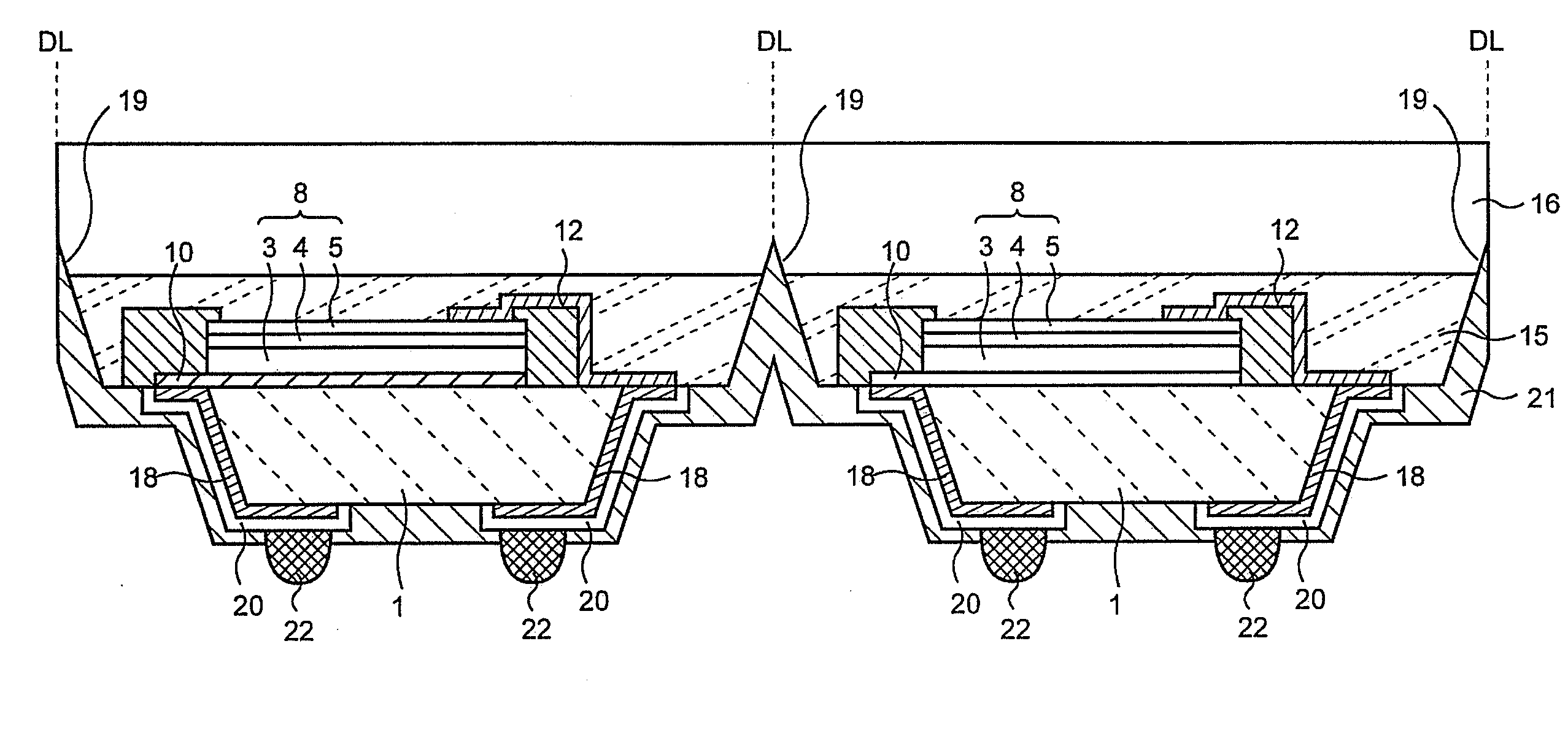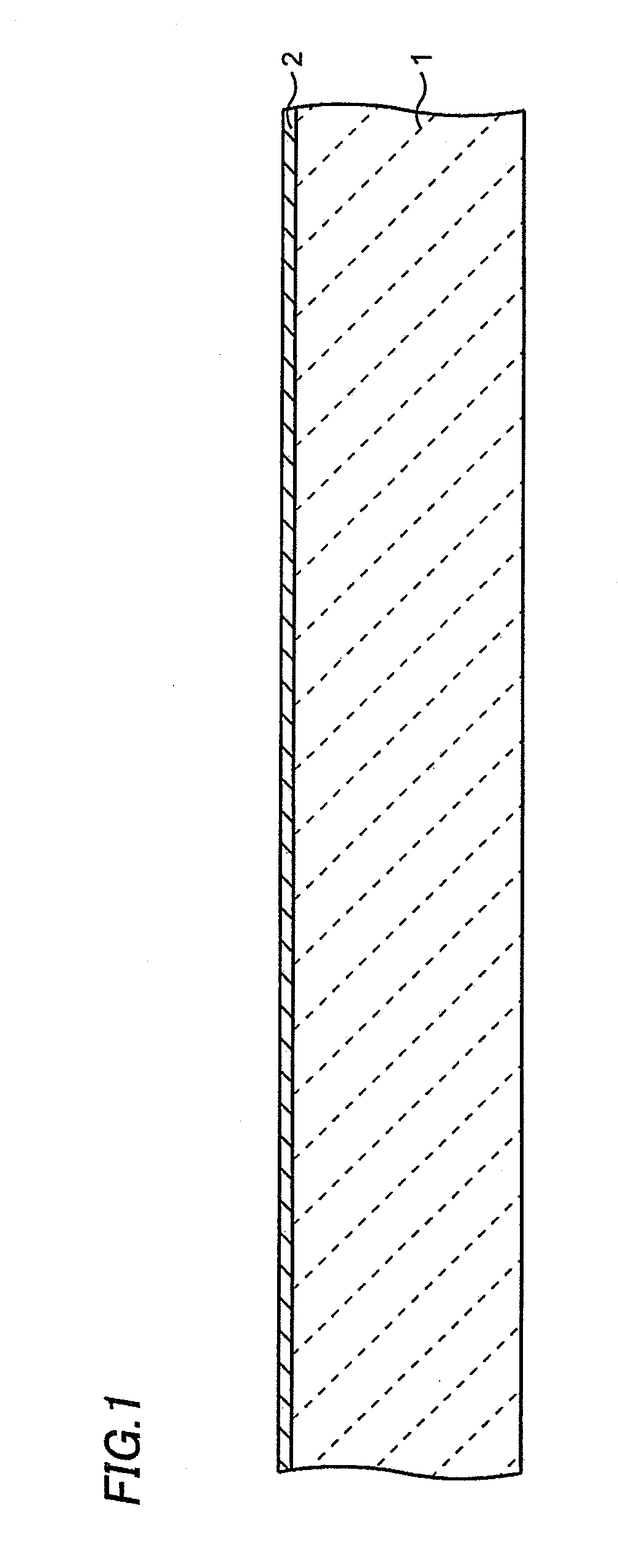Semiconductor device and method of manufacturing the same
- Summary
- Abstract
- Description
- Claims
- Application Information
AI Technical Summary
Benefits of technology
Problems solved by technology
Method used
Image
Examples
first embodiment
[0047]the invention will be described referring to figures. FIGS. 1 to 14 are cross-sectional views in manufacturing process order.
[0048]First, as shown in FIG. 1, a conductive layer 2 made of aluminum (Al), copper (Cu) or the like is formed on a front surface of a first substrate 1 to have a thickness of, for example, 1 μm by a deposition method such as a sputtering method or the like. The conductive layer 2 is a layer that is to be patterned into cathode electrodes 10 as described below. The first substrate 1 may be a semiconductor substrate made of silicon (Si) or the like, or may be an insulating substrate made of glass or the like.
[0049]Then, as shown in FIG. 2, an N type second substrate 3 made of, for example, gallium arsenide (GaAs), gallium nitride (GaN) or the like is provided. The thickness of the second substrate 3 is about 300 to 700 μm, for example. The material of the second substrate 3 may be appropriately changed according to a target color of emission light. An N t...
second embodiment
[0076]Although the conductive layer 2 is patterned into the pad electrodes 33 and the cathode electrodes 10 after the LED dies 8 are transferred to the semiconductor substrate 31 in the second embodiment, the conductive layer 2 may be patterned before the LED dies 8 are transferred thereto instead. According to needs, a passivation film (not shown) (e.g. a silicon nitride film formed by a CVD method) covering the pad electrodes 33 partially or completely may be formed on the front surface of the semiconductor substrate 31.
[0077]Then, the insulation layers 11 covering the side surfaces of the LED dies 8 and parts of the cathode electrodes 10 are formed. The anode electrodes 12 are then formed so as to extend from on the front surface of the first substrate 1 onto the front surfaces of the P type semiconductor layers 5 along the circumferences of the insulation layers 11.
[0078]Then, as shown in FIG. 17, the semiconductor substrate 31 and the supporting body 16 are attached with the ad...
third embodiment
[0085]In the semiconductor device 50 of the third embodiment, as shown in FIG. 22, a light receiving element 51 is formed on the semiconductor substrate 31. The light receiving element 51 includes a photodiode (Photo Diode), a phototransistor (Photo Transistor) or the like that are generally known, and has a function of converting light into an electric signal. A metal layer 52 that reflects light emitted from the LED die 8 to the light receiving element 51 side is formed between the supporting body 16 and the adhesive layer 15. The metal layer 52 is preferably made of a material with high reflectance such as aluminum (Al) or the like, and may be formed on the attachment surface of the supporting body 16 by, for example, a sputtering method before the attachment of the supporting body 16.
[0086]The feature of the semiconductor device 50 of the third embodiment is that the light receiving element 51 is formed on the substrate (the semiconductor substrate 31) in addition to the light e...
PUM
 Login to View More
Login to View More Abstract
Description
Claims
Application Information
 Login to View More
Login to View More - R&D
- Intellectual Property
- Life Sciences
- Materials
- Tech Scout
- Unparalleled Data Quality
- Higher Quality Content
- 60% Fewer Hallucinations
Browse by: Latest US Patents, China's latest patents, Technical Efficacy Thesaurus, Application Domain, Technology Topic, Popular Technical Reports.
© 2025 PatSnap. All rights reserved.Legal|Privacy policy|Modern Slavery Act Transparency Statement|Sitemap|About US| Contact US: help@patsnap.com



